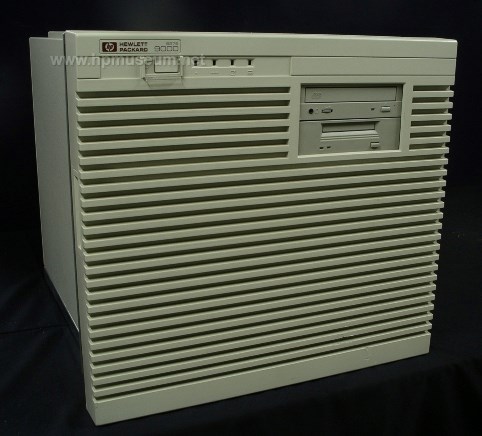Computer Systems
 | 800 Series Selection: |
| 1) 840 (1986) | |
| 2) 825S/835S/845S (1987) | |
| 3) 850S (1987) | |
| 4) 822S/832S (1989) | |
| 5) 808S/815S (1989) | |
| 6) 827S/847S/857S (1991) | |
| 7) 807S/817S/837S (1991) | |
The 800 Series was the first line of HP computers to employ HP's new Precision Architecture (PA) RISC (Reduced Instruction Set Computer) CPUs. The Model 840 was introduced in 1986. Click here to view part of an article about RISC computing featuring HP on the Silicon Valley TV program "Computer Chronicles" in 1986. (1 minute 47 seconds, 8 Mb). HP's original PA-RISC technology was 32-bit. It was implemented first on 800 Series servers, then on HP 3000 computers (1987), and then on 700 Series workstations (starting in 1991). Most HP computing was PA-RISC based during the 1990s, excluding the PC business. In 1989, HP introduced the 9000/600 Series servers. This range consisted of two products - the 635SV and the 645SV. The 635SV was basically a 9000/835S bundled with a 35401 tape autochanger, a 670 Mb disc drive and some other components. The 645SV was basically a 9000/845S bundled with two 670 Mb disc drives and some other components. In 1991, HP introduced the HP 9000 1200 Series computers. The 1200 Series computers were fault-tolerant UNIX systems that HP OEMed from Sequoia Systems to compete with Tandem. These computers were based on Motorola MC68040 CPUs. The low-end 1210 held up to four 25 MHz CPUs while the high-end Model 1245 held up to 32 33 MHz CPUs. If you are looking for manuals on the HP-UX operating system, utilities and applications from the 1990s, the best source is one of HP's Instant Information CDs. The manuals can be printed directly from the disc. The list of manuals on the 1997 disc is here. The list of manuals from the 1999 disc is here. Contact us if you need one of these discs. Software for these computers can be found here | |
| Back | Product Documentation | Category Accessories |
^ TOP©2004 - 2024 BGImages Australia - All Rights Reserved.
The HP Computer Museum and BGImages Australia are not affiliated with HP Inc. or with Hewlett Packard Enterprise. Hewlett Packard and the HP logo are trademarks of HP Inc and Hewlett Packard Enterprise. This website is intended solely for research and education purposes.
